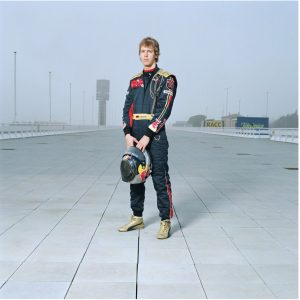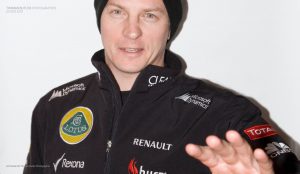The visual excellence of the work you produce can often determine how commercially successful your brand photos and video content can be. The greater the knowledge of the craft you possess, the more confident you can be that your images will impress your clients. It takes years to master the fine art of portrait photography and it is very important to be patient, persistent and dedicated. It is foolish to think that the first portrait you make will be a work of art. In order to get there you need to create thousands of images that are not good enough, and to continue working hard regardless of the difficulties you are facing on your journey towards excellence.
Like most things in life, creating portraits in photographic or video medium is mostly about knowing all the right steps. The best way to learn these steps is to repeat them so many times that you can’t be sure of the exact number. Although it is very important to continue practicing even when you are an acknowledged professional, you can start creating beautiful portraits long before you can call yourself an expert in this field.
There are certain requirements that every decent looking portrait must meet, and these are mostly technical requirements that don’t demand a huge amount of experience or knowledge, but they do require dedication and genuine interest. Let’s have a look at some of the tips that might help you create better portraits.
Head of the FIA’s single seater commission, Stefano Dominicali, by Thomas Butler
Use the right equipment
Equipment matters, regardless of what some of the most prominent filmmakers of our time might say. It especially matters when you are trying to create a professional looking shot that will serve as a public image of your client’s company.
Having the latest cameras and lenses isn’t as important as having the right equipment. It is ridiculous to try to shoot a low light scene of any sort with a camera that doesn’t have the features that allow you to do that.
Regardless of which kind of portrait you are taking the most important thing is the right glass (lens). The most commonly used lenses for studio portraits are in 35 to 55mm lenses, but you can also opt for a telephoto lens that will flatten the space between your subject and the background. If you are shooting outdoors and want to capture as much space as possible, your first option should be a wide angle lens that can depict the space around your subject nicely.
Despite the popular belief that the work of a photographer or a videographer is done once they leave the set, the most important part of creating a great portrait starts in the post-production. Maybe the camera didn’t capture the colors realistically or perhaps there is a minor intervention that needs to be made on the footage. The images we see on the billboards or in magazines or on video commercials are always edited. It often happens that the pictures get their final form after they have been edited and adjusted for their commercial purpose. The visual material we see on the websites of famous companies is never straight out of the camera.

Rolling Stone cover with Green Day by Artz
Master the light
Regardless of all the wonderful advantages that computer programs like Adobe Lightroom, Adobe Photoshop or Final Cut Pro, there is little you can do with these programs if the light you used on your models was completely wrong.
How the light is going to be on any particular set depends on the effects you are trying to reach. Most of the studio portraits created for corporate or commercial purposes strive to remove all shadows. This effect is achieved by using two or more softboxes and by positioning them in such a manner that they eliminate all the shadows cast by the model. Using a flash can also come in handy because it gives you another source of light that will make sure that your model is perfectly lit.
Outdoor scenes can be difficult to shoot because it is much more difficult to control the light conditions. If you are shooting for several hours at one location the chances are that the light will change several times. That’s why using collapsible reflectors is almost mandatory for every outdoor photo session. Video productions are equally complicated to shoot in outdoor conditions because it is difficult to remove all the shadows created by natural light. In most cases, a lot of spotlights and other light reflecting gadgets are required to create the material that can meet the industry standards.

Justin Timberlake by Artz
Have a watchful eye
Capturing a visually interesting shot is not always easy, as a matter of fact at times it can be quite difficult. The secret is in the patience. It takes a lot of patience to get the right expression from your model.
Usually, you just need to set up a scene and wait for the right moment in which your model gives you exactly what you need. Learning to recognize that moment and reacting fast enough before the window of opportunity closes is what can mean the difference between an average and a remarkable shot.
The readiness to experiment and try out different things might be of help because it will give you a wider range of angles as well as more diverse shots to choose from.

Sebastian Vettel by Thomas Butler
Make your models smile
Being in front of cameras can cause some people to freeze. It happens even to the trained professionals. A good photographer, ad director or a cameraman must know how to work with models and make them relax.
The most effective way to do this is to amuse them. By doing so you achieve several things that are crucial for the creation of the great visual material. First and foremost, no one likes portraits in which the model’s facial expression is grim. Serious, yes, but not grim. If the atmosphere of the set is lighthearted the model will spontaneously have a tendency to smile more. The person in front of the camera will look happy and unconstrained.
Spontaneity is another reason why you should put all of your efforts in creating a pleasant and entertaining working atmosphere on your set. If you manage to do so, your portraits will please your clients and you will produce the visual material that will make you commercially successful.

Kimi Raikkonen by Thomas Butler
Take a look here for a selection of interesting photography articles.

